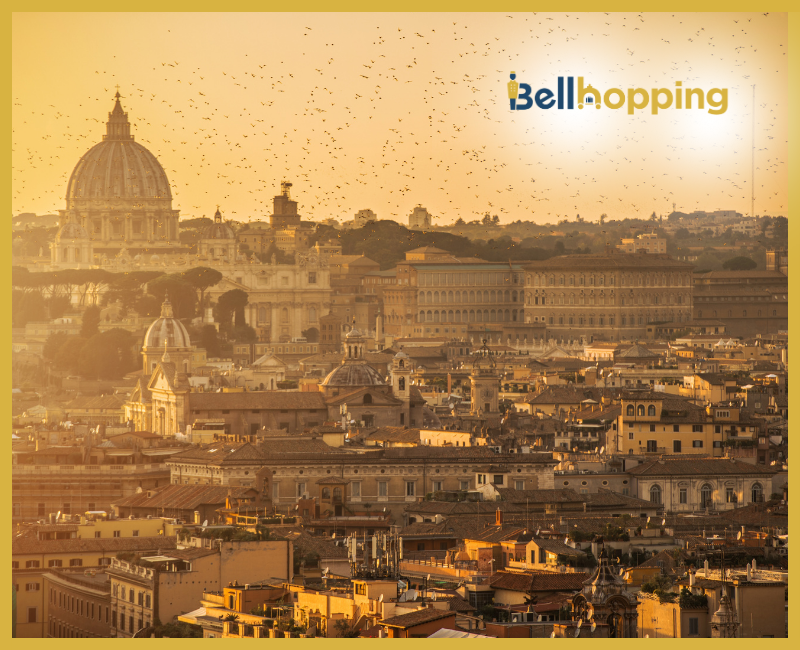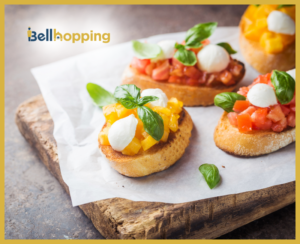Rome is an enchanting city which of course has much to offer active visitors. It is one of the world’s most popular cities and it is the capital of Italy. Tourists come from all parts of the world to watch ancient structures, eat delicious Italian food, and hear about its wonderful history.
If you are dreaming of spending your time in such a city as Rome, this guide will make your trip great. We’ll discuss when it is appropriate to visit, what attractions the passengers might not want to miss, and how the passengers can locate the perfect accommodation. Are you prepared for information blasts of Rome hotel bookings, luxury hotels in Rome, and more?
Many people know that Rome is a city of incredible history, unique art, and delicious cuisine. Because of the heavy historical background, it is often referred to as ‘the eternal city. No matter if you like history, like eating pizza, or visiting museums, you will enjoy your time in Rome.
But when is the best time to visit Rome? That again depends on what you want to do. Discover the perfect times to travel to Rome by examining the seasons, weather, and events to keep in mind.
When Should You Visit Rome?
Essentially Rome is beautiful if visited at any time of the year, however, it depends on the kind of climate you are interested in.
Spring (March to May)
That which makes spring a suitable time to visit Rome is not exhaustive but some of the reasons include; The climate is actively warm with no extreme heat and everything is in bloom; flowers.
Weather: Fresh temperature being about 15 to 22 degrees Celsius or 59 to 72 Fahrenheit is good for walking outdoors.
What to Do: See lovely places such as Villa Borghese, taste delicious Italian ice cream, and visit extraordinary places like the Colosseum.
Summer (June to August)
The average temperature during the summer season is often high, and the sky is mostly clear. We seem to get into festivals and outdoor events with the weather and time.
Weather: 27–31°C (81–88°F) so clothing should be light and do not forget your sunscreen.
What to Do: Watch summer festivals, eat lots of ice creams, and visit some interesting museums during the summertime.
Fall (September to November)
Autumn also means more comfortable temperatures and fewer people to disturb. A good moment to check the city.
Weather: 15–25°C (59–77°F), perfect for wearing comfortable shoes for a walk.
What to Do: With several streets to wander around including the Tiber River, you can taste coffee, and not neglect visiting Basilicas such as the St. Peter’s Basilica.
Winter (December to February)
It is cold and sleepy in Rome in winter. With it, you can view the Christmas decorations around the city while enjoying fairly decent prices.
Weather: It’s generally around 10 degrees Celsius or 50 degrees Fahrenheit so make sure you carry your warm jacket with you.
What to Do: Go to museums, attend Christmas fairs, and taste the hot Italian pasta.
How To Clove A Hotel In Rome
So, to make a great trip you have to start with the right place to spend the night. Rome has a lot of great places to stay, everything from extravagant accommodations to small quaint places.
Luxury Hotels in Rome
If you prefer the luxury feel you can choose from many luxury hotels in Rome. These hotels have large comfortable beds, good food and yes you will find spas in these hotels. Some are close to tourist attractions, for instance, the Colosseum or the Vatican City.
Exclusive Rome Resorts
If you want to go the extra mile, then you need to visit exclusive Rome resorts. These places could be in a dream. They can sunbathe by the swimming pool; take a walk in the well-tended garden or even eat in a starter restaurant.
Budget-Friendly Hotels
That’s it, do not worry if you want to save some money. Of course, there are also affordable hotels in Rome. They may not complement the high-end gadgets, but they offer clean surroundings, comfort, and most importantly family accommodation.
Booking Tips
- There is another way to look for the best hotels in Rome, it is to use the Website to get information on the price difference.
- It is advisable to make an early reservation, especially for the visitors who are planning to travel during the spring-summer season.
- Search on Rome travel packages for hotels, flights, and other tour-inclusive offers.
Best Events In Rome
Spring Events
Easter Week: Welcome Easter with a religious event featuring mass and procession at the Vatican.
Rome’s Birthday: Rome was founded on the 21st of April. Enjoy parades and fireworks.
Summer Events
Republic Day (June 2nd): Take in parades and even enjoy the anniversary of Italy itself.
Music Festivals: Listen to live music at the Rock in Roma or any other summer fest.
Fall Events
Notte Bianca (White Night Festival): Savor music and art that happens at night in September.
Rome Film Festival: Watch international movies and interact with celebrities in October.
Winter Events
Christmas Markets: Visit the Piazza Navona area for shopping for gifts and small treats.
Carnival In February: It is an entertaining occasion during which one must watch parades and wear colorful masks.
Tips for Booking Your Trip
Plan Early
Tours to Rome remain high, especially during the season, from spring to summer. Rome hotel bookings and flight bookings should be done well in advance to get the best on offer.
Choose the Right Hotel
For more information on luxury hotels, look at Luxury Accommodation in Rome or Rome’s Best Hotels. Given the nature of these places, they deliver excellent service, have outstanding rooms, and are located in strategic places.
Look for Travel Packages
If you want to have an easy vacation without thinking of so many things, you have a Rome travel package that you can try. These range from flight bookings, bookings in accredited hotels, and even guide tours meaning the consumer saves time and sometimes even cash.
Top Places to Visit in Rome
The same can be said by stating that Rome is an open-air museum. The beauty of art and architecture can be found around every corner, just astounding.
Colosseum
The Colosseum is one of the best-known constructions in the world. It is a very old place where gladiators used to battle. You may visit the place and be enlightened about its history.
Vatican City
The pope has a home that is a small country inside Rome. It is the place of the Pope and wonderful such as St. Peter’s Basilica and the Sistine Chapel.
Trevi Fountain
The Trevi Fountain is something of an enchanting fairy tape that becomes a coin-tossing site to wish for something. Oh, and do not forget that it is tradition here to throw a coin into the water over their shoulder.
Roman Forum
The Forum Romanum is a large zone with architectural remains. It is always interesting to guess what life would have been like in ancient Rome.
Piazza Navona
This is a large beautiful paved area with water features and artists and some cafés. This is a nice meeting and eating place where they offer gelato.
Fun Activities for Families
Rome Is Not Only For Adults But Also For Kids.
Take a Pizza Class
Find out how real Italian pizza is made. It’s fun and yummy.
Explore Castles
Click the Castel Sant Angelo, an interesting castle which has underground tunnels and the best view in Rome.
Ride a Bike
Hire out bicycles and travel through Villa Borghese parks. It is a beautiful place, a bit away from the noisy city life.
Eat Gelato
It is a fact well known to anyone who has been to Rome that their ice cream is the best in the whole world. It is recommended that one should try theatres of pistachio, chocolate, or strawberry.
Rome Travel Packages
It is always difficult to plan a vacation; however, Rome travel packages simplify everything. These packages often include.
- Flights to Rome.
- Accommodations in a few of the best hotels in Rome.
- Visiting famous places as tourist attractions.
- And some will even let you throw in meals or even transport.
Handling travel packages often is time and cost-effective; this is especially true for people who believe in family. Go online to locate promotions that match your price range.
Rome’s Delicious Food
Italian food must be one of the most enjoyable aspects of having a vacation in Rome.
Pizza
Rome’s pizza is crunchy and very thin. Other toppings you can use include fresh tomatoes, cheese, and basil.
Pasta
For example, don’t leave without having tried some pasta such as spaghetti carbonara, cacao e pepe (pasta with cheese and pepper).
Gelato
Gelato is Italian ice cream, and by its flavor and taste you feel amazing the whole day.
Tiramisu
This is a dessert prepared from coffee, cream, and cocoa and is taken as one of the desserts. It’s perfect after a meal.
Tips For A Great Trip
- Wear comfy shoes. You’ll walk a lot in Rome.
- Carry water. Oh especially in summer, it gets hot here.
- Book tours early. Destinations such as the Vatican are likely to get crowded.
- Learn a few Italian words. Just a simple ciao, hello, or Grazie, thank you are always welcome.

Wrap up:
Rome is a wonderful city indeed. If it is the historic Colosseum or delicious gelato, there is something for everyone. Whether you decide to stay at luxury hotels in Rome or other relatively cheaper kinds of hotels, your trip is going to be awesome. Remember to use some hotel recommendations to make your bookings early, also Rome Travel recommends Useful and might find better discounts in Rome travel packages.
Rome is the most beautiful city, beautiful no matter the season it is. Something is engaging and inviting during the spring and fall, the weather is great, and there are things to do. Summer is busy and tropical while winter is calm and warm. Whether you select the time that suits you the most, you will have a wonderful journey.
Whether you have decided to holiday in luxury and book one of the best hotels in Rome or choose to discover the appeal of boutique Rome resorts, Rome will provide memories for a lifetime.









-body.jpg/webp)






